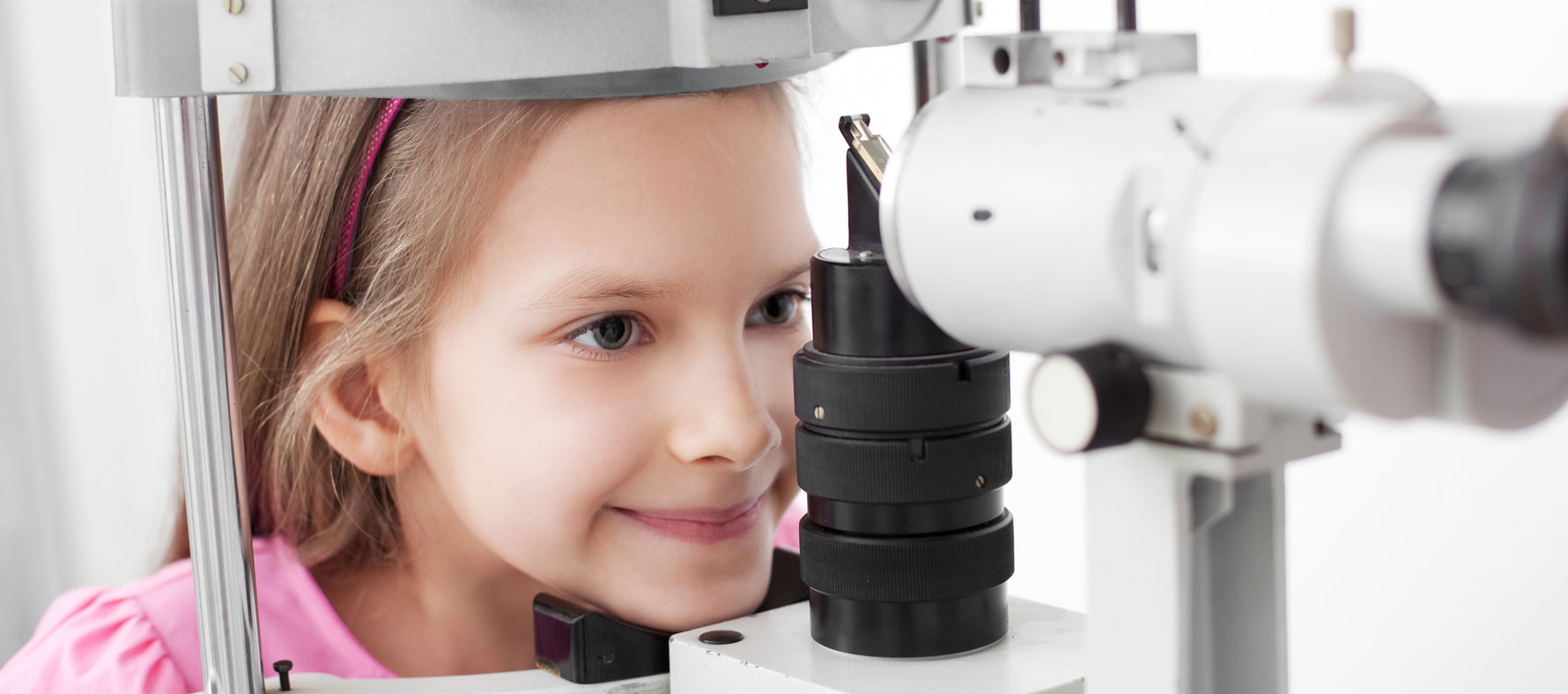Children’s eye exams are a routine part of our practice. Our ophthalmologists deal with problems common to or seen exclusively in the pediatric or children’s age group.
Your child will have the following testing during the course of their pediatric eye exam:
Your child's vision will be checked. This is possible even in children who do not speak yet. For older children, picture charts, letter games and letter recognition can be used.
Various methods are used to test the alignment of the eyes and make sure the muscles, which move the eye, are functioning normally. This may be done using light reflexes or alternately covering each eye to make sure that they do not move from the straight ahead position.
We use these tests to make sure that the eyes are not only aligned correctly, but that the brain is using them together as well. If the eyes are properly aligned, it does not always follow that the brain is using them together. Proper eye alignment is important for the development of depth perception, or the ability to see objects in 3D.
Refraction is used to measure the "power" of the eye. It determines if your child is nearsighted, farsighted or has astigmatism. This can be done in infants where they cannot cooperate to tell us how well they are seeing. A special light is placed into their eyes and the light is moved back and forth. The light enters the eye and "bounces" back to the examiner. The way the light behaves as it comes back out through the child's eye can be used to determine the refractive power of the eye. To obtain accurate measurements in young children, the focusing power of the eye must first be neutralized. This is done by placing drops into the eye to dilate the pupil and eliminate their focusing mechanism. These drops often take 30-60 minutes to work.
We may use specialized instruments, often worn on our head, to look into the back of your child's eye. The retinal blood vessels and the optic nerve, an extension of the brain, can be seen. Because this is an area where blood vessels and portions of the brain can be seen, it is very valuable in helping to diagnose many disorders that can affect the entire body. Once the examination is complete, your child may be prescribed glasses. Treatment for any other problems may also be addressed. If your child received drops, he/she may experience blurry vision until their effect has resolved which can be anywhere from three to 24 hours. The duration of this effect is dependent on the type of drop used, the color of his/her eyes and the refractive power of their eyes.




